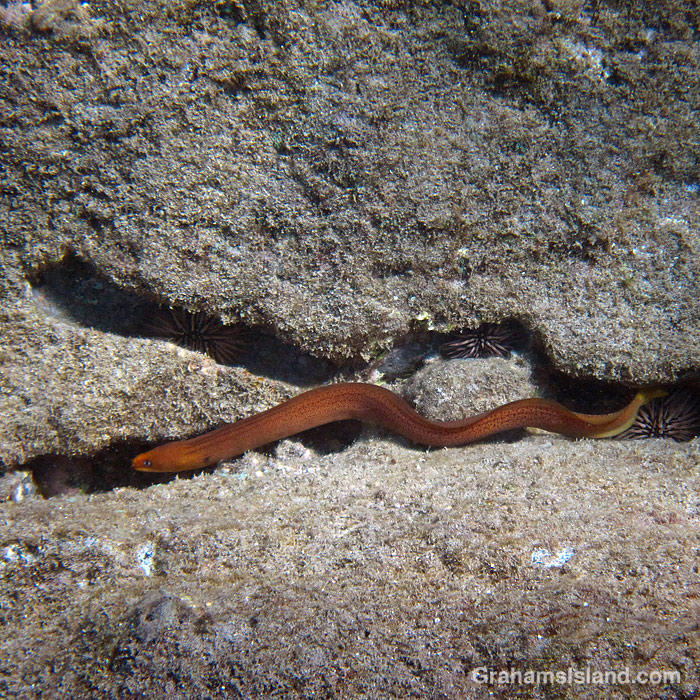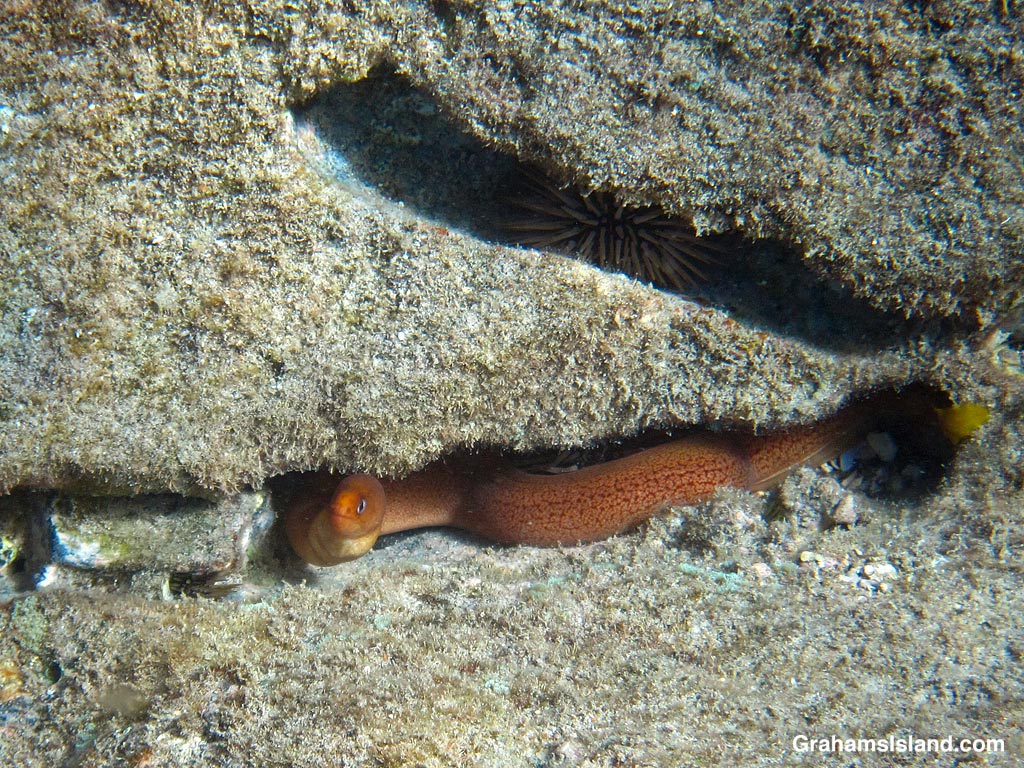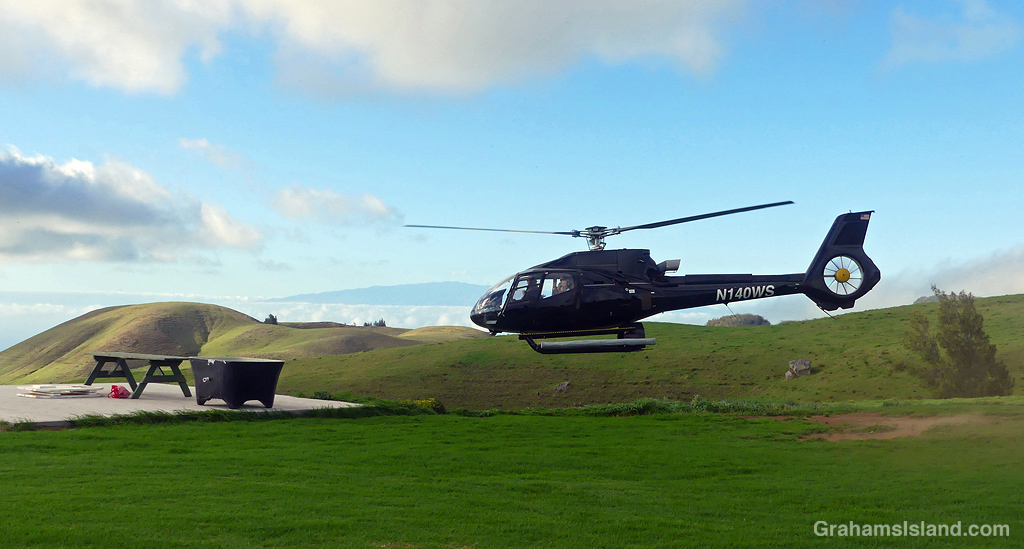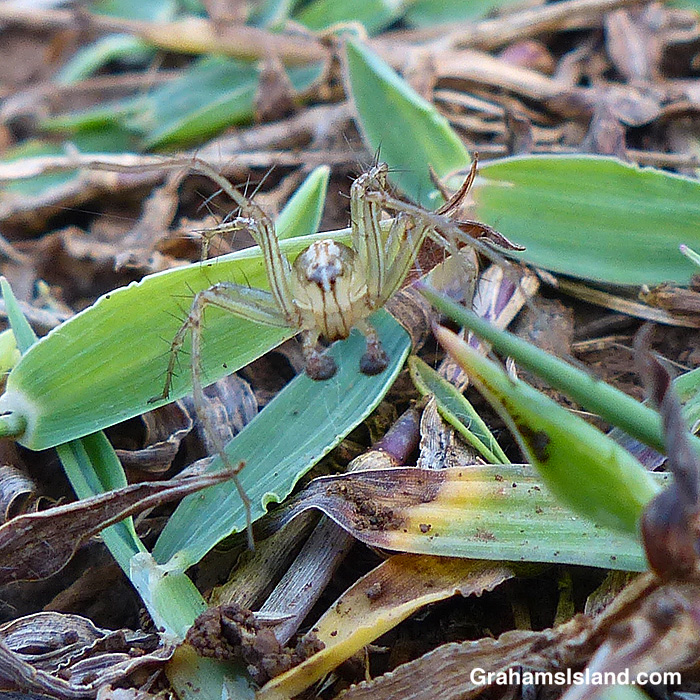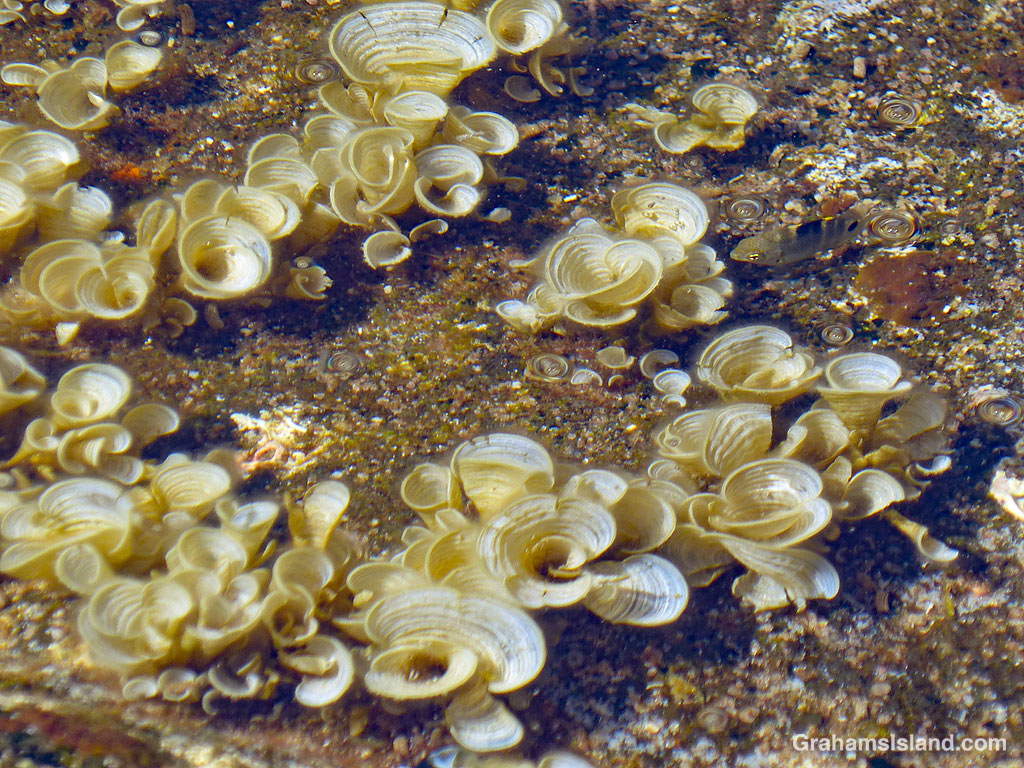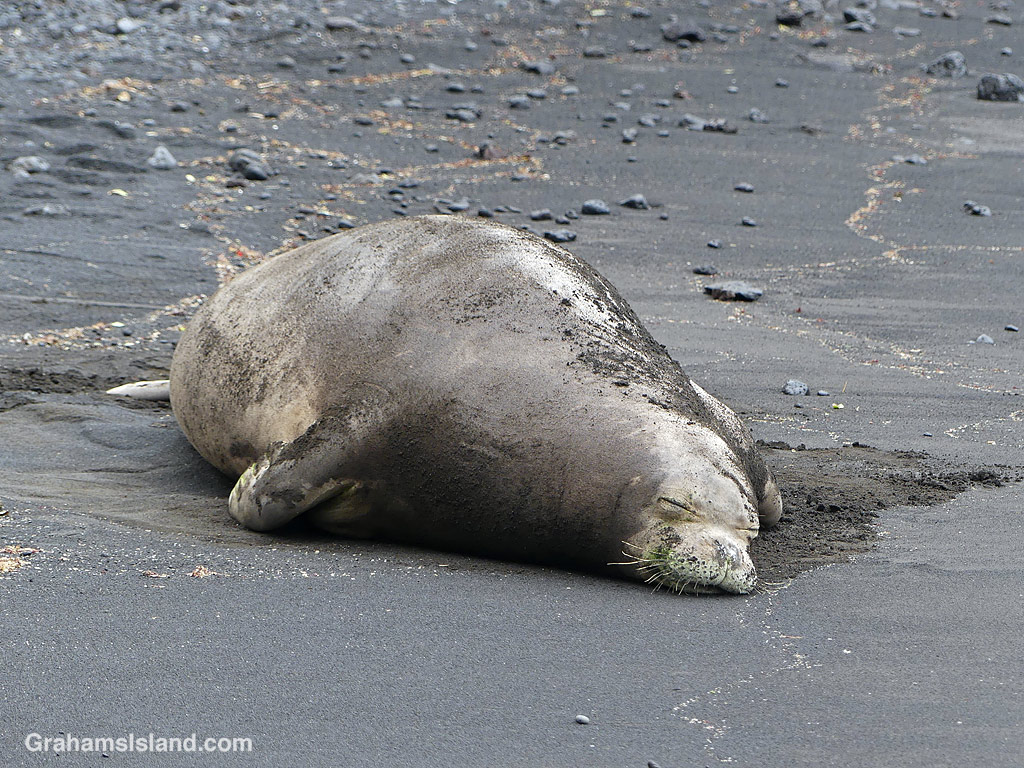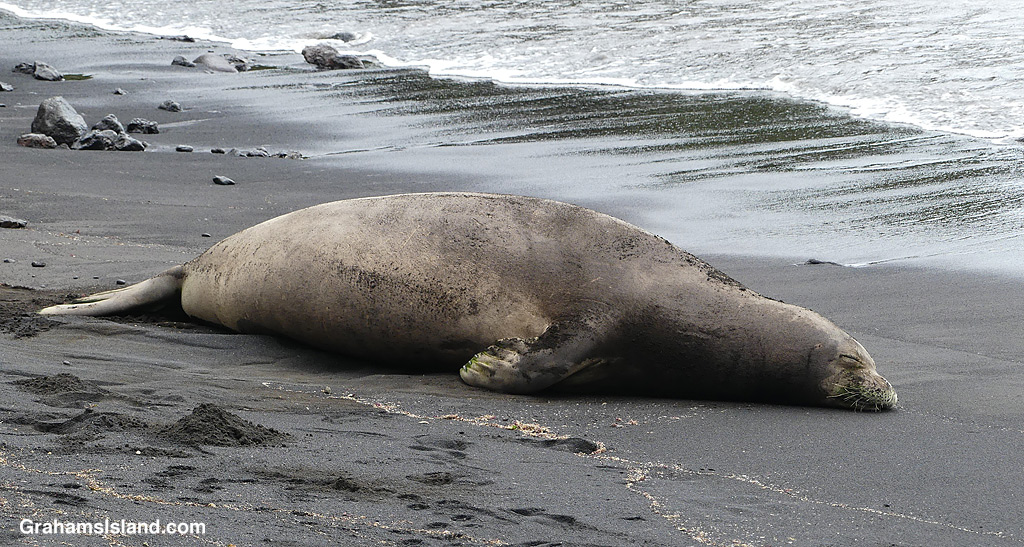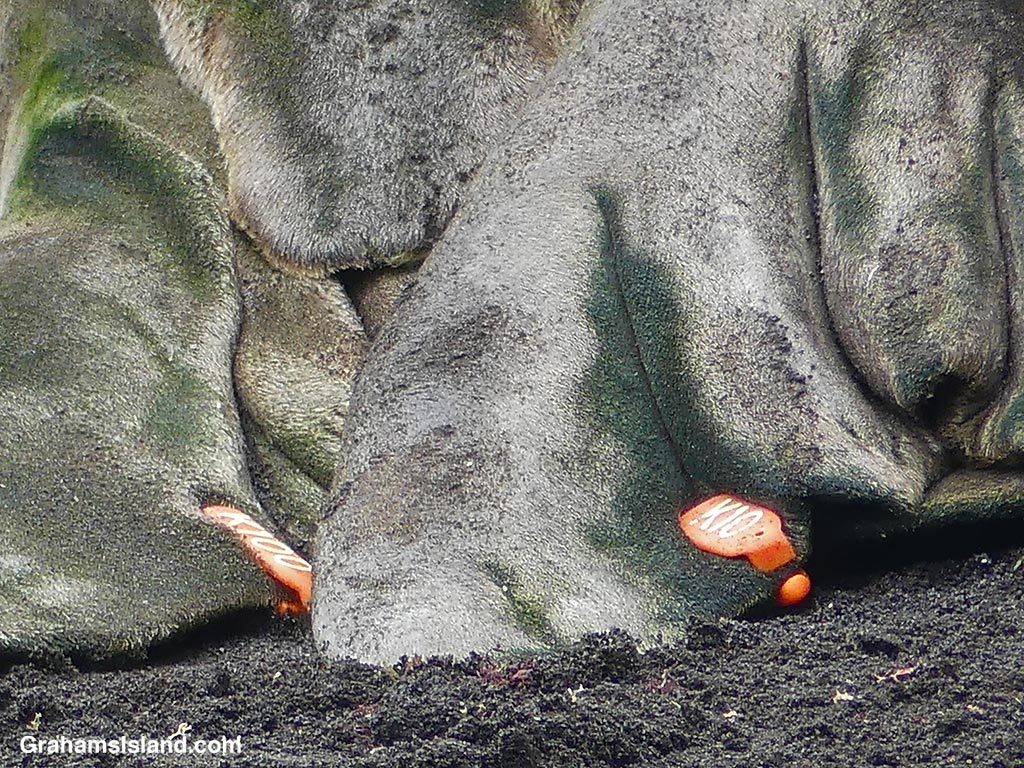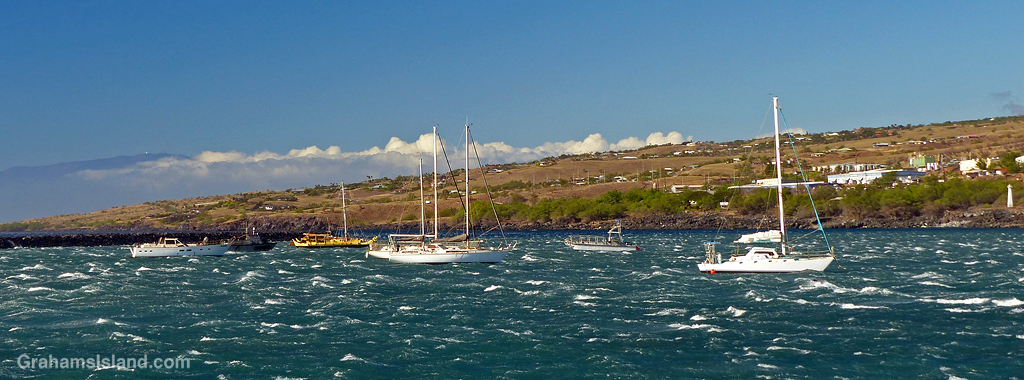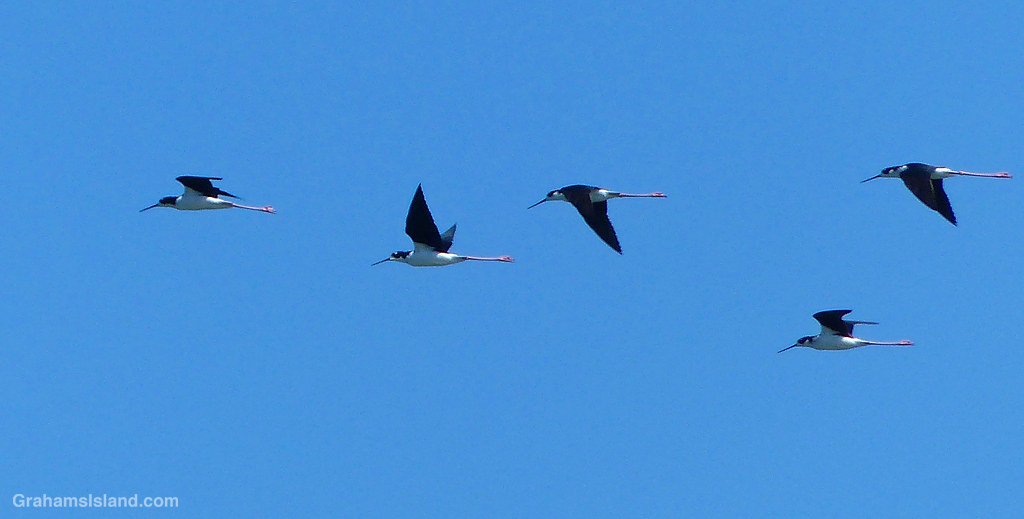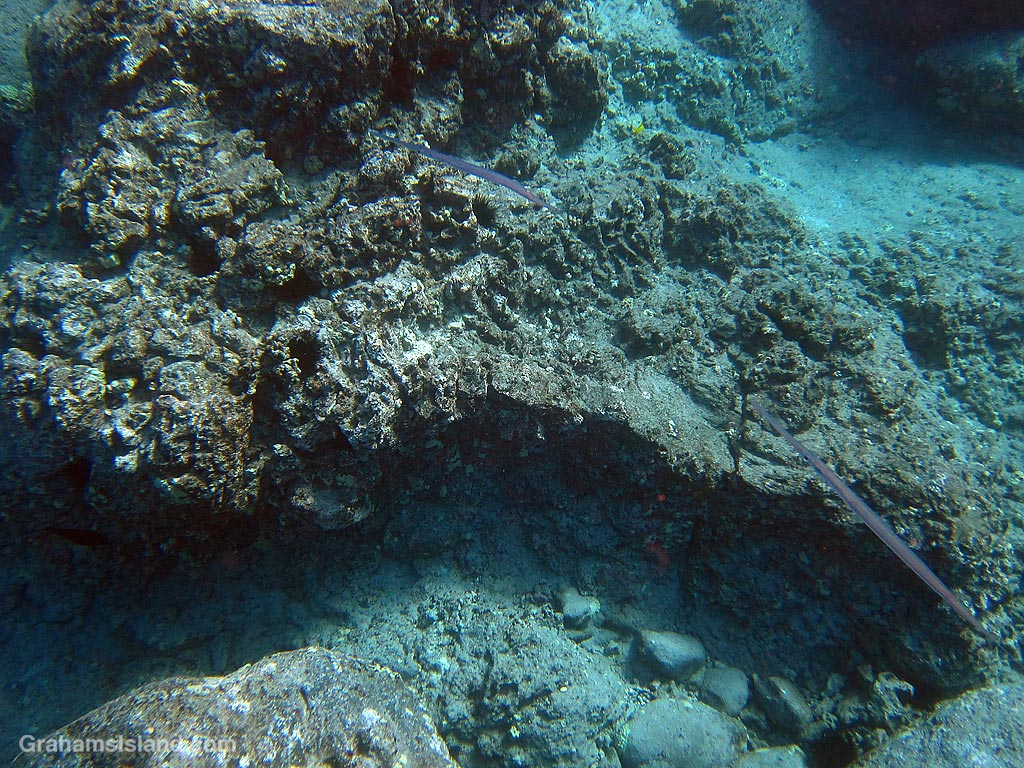
It’s been a long time since I saw a Triton’s Trumpet, so I was happy to spot this one soon after I got into the water recently. However, it didn’t look like it was in a good situation, shell down in the rocks and the opening exposed. I’m not one to interfere with nature too much so I took photos and carried on with my swim. When I returned, I looked for it again and found it right side up and all well.
Triton’s Trumpets are extremely large marine snails. Even when I first saw it, in its precarious position, there was probably no danger. Triton’s Trumpets have no predators in nature. The biggest threat to them is, of course, us humans, who covet them for their very attractive shells.
A downside of this is that these snails are one of the few things that eat Crown-of-Thorns Stars, which are significant destroyers of coral. So going out and buying one of these shells contributes in a direct way to the disappearance of coral reefs.
One thing I have yet to see, but would very much like to see, is a Triton’s Trumpet going after a Crown-of-Thorns Star. That’s because they’re considered to be very speedy snails. Even though a Crown-of-Thorns Star can detect the presence of a Triton’s Trumpet and get a head start, the snail can run it down, moving forward with considerable purpose!
Posted for Becky’s Squares: Move Forward, Reconstruct, Renew, and/or are Burgeoning. See more responses here.








